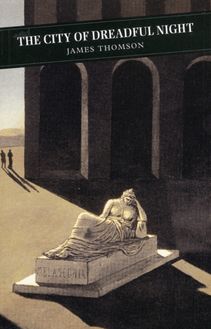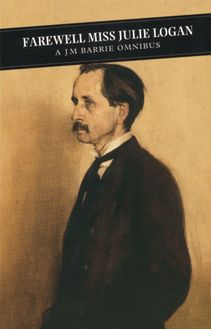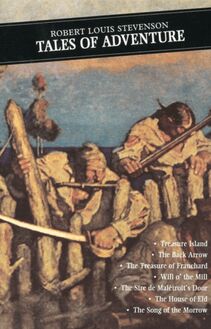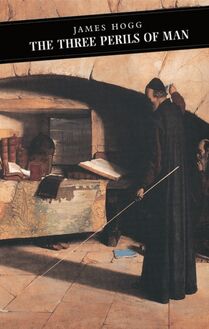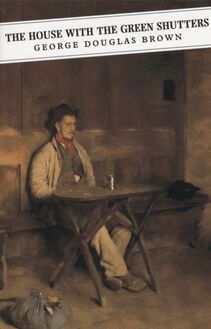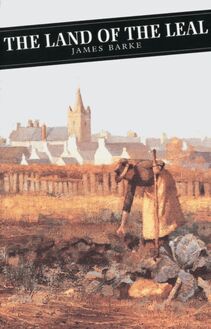Tales Of Adventure , livre ebook
297
pages
English
Ebooks
2010
Vous pourrez modifier la taille du texte de cet ouvrage
Obtenez un accès à la bibliothèque pour le consulter en ligne En savoir plus
Découvre YouScribe en t'inscrivant gratuitement
Découvre YouScribe en t'inscrivant gratuitement
297
pages
English
Ebooks
2010
Vous pourrez modifier la taille du texte de cet ouvrage
Obtenez un accès à la bibliothèque pour le consulter en ligne En savoir plus
Publié par
Date de parution
01 juillet 2010
Nombre de lectures
2
EAN13
9781847675217
Langue
English
Publié par
Date de parution
01 juillet 2010
Nombre de lectures
2
EAN13
9781847675217
Langue
English
Robert Louis Stevenson
TALES OF ADVENTURE
Introduced by F. R. Hart
THE BLACK ARROW TREASURE ISLAND
The Treasure of Franchard The Sire de Malétroit’s Door Will o’the Mill
The House of Eld The Song of the Morrow
Contents
Introduction
The House of Eld
Will o’the Mill
The Sire de Malétroit’s Door
TREASURE ISLAND
The Treasure of Franchard
THE BLACK ARROW
The Song of the Morrow
Stevenson: The Two Sindbads
‘R.L.S.’, notes his most recent biographer Ian Bell, ‘wrote tales of adventure. That is true enough, but not the whole truth.’ Far from it. But the ideas of adventure and of the adventurer haunt his fiction in many guises. The highly unusual collection of stories in this volume shows us the young tale-teller experimenting, trying out his craft. It includes two short fables, three longish short stories, and two long stories which, for want of a better term, we will call ‘novels’. They are printed here in the chronological order of composition, so that, should you be so inclined, you can speculate about his artistic development. But such speculation is risky with R.L.S. His restless impulse to strike out in new directions and his habit of returning later to get unfinished work ‘unstuck’ have frustrated scholars in search of coherent development. Some vent their frustration by faulting him for uncertainty or frivolity. Others impose models that are too conceptual to contain his impulsive genius and that depreciate his early writing.
Storytelling surrounded Stevenson from childhood, and he was dictating stories to his mother and his nurse ‘Cummie’ before he was ten. At thirteen, he was editing a schoolboy magazine, and before he was twenty, he was writing stories about the Scottish covenanters. But the discovery of Scotland as his subject was far off in the future. His early published tales reflect foreign interests.
The fable as a form appealed to him through his career; indeed, Jenni Calder, the author of my favourite study of Stevenson, thinks all of his fiction tends toward fable. ‘The House of Eld’ and ‘The Song of the Morrow’ may have been drafted in 1874, though their final versions came only twenty years later. ‘Will o’ the Mill’, a tale of an Alpine village, was written in summer, 1877. ‘The Sire de Malétroit’s Door’, a sketch arising out of the young scholar’s immersion in late medieval France, followed a few weeks later. Treasure Island , which carries us from the south English coast to a remote tropical isle, was begun at Braemar in summer, 1881, and after a delay when (characteristically) he got ‘stuck’ in Chapter Sixteen, was finished to meet serialisation deadlines in November in Switzerland. ‘The Treasure of Franchard’, an ironic idyll of a French town familiar to him as an artists’ colony, came a year later. The Black Arrow , an anti-romance of war-torn fifteenth-century England, was tossed off as a serial sequel to Treasure Island in 1883. Stevenson was then thirty-three. In 1884 at Bournemouth he settled down to serious reflection on fiction, and the ‘mature novelist’ emerged.
So, these stories belong to his first decade as a man of letters, when he was also publishing essays, travel books, biographical and historical studies, lay sermons, and critical reviews. He was experimenting tirelessly, seeking his form, style and matter. The variety is astonishing; versatility was Stevenson’s Delilah. His friend and admirer Henry James said:
it is a delight to read him, and … he renews this delight by a constant variety of experiment … It is just because he has no speciality that Mr Stevenson is an individual … It is easy to believe that if his strength permitted him to be a more abundant writer he would still more frequently play this eminently literary trick – that of dodging off in a new direction.
Less genial and pluralistic critics, wedded to the norm of consistency, have found this ‘dodging’ habit a symptom of immaturity or frivolity. James is the better guide.
Certainly the young writer was ‘eminently literary’, passionately committed to learning how to write. What to write, on what subject, in what form, followed after. In the 1870s and 1880s, his options were unsettling, overabundant; the choices hard to make. The literary world he entered was stirred by four currents.
First, the great practitioners of the mid-Victorian novel were dead or dying, and their mode – realistic, domestic, psychological – seemed restrictive, sterile. A taste arose for non-realistic modes, poetic, fabulous, which Stevenson the aesthetic theorist would later promote under the heading of ‘romance’. The term we adopt for this collection, ‘tale’, with its connotations of the exotic and the quasi-legendary, recalls that current.
Second, contemporaneous with, possibly related to the current of romance, was a programme to cultivate prose as an art, to elevate prose to the level of poetry. Its prominent spokesman was Walter Pater. And of the documents generated by this ‘cult of prose style’, Travis Merritt singles out Stevenson’s essay ‘On Style in Literature’ as ‘far and away the most important … and most amazing’ for its ‘sheer concentration on verbal method, for specific interest in the texture of language’. Stevenson was fascinated by style, and he freely admitted he had trained himself by playing ‘the sedulous ape’ to an array of past stylists. ‘Before all things he is a writer with a style’, wrote James, ‘a model with a complexity of curious and picturesque garments’. His denigrators accused him of being a mere mannerist, an ‘eminently literary’ poseur.
In our tales you will find a variety of accomplished styles. To be fair to Stevenson the artist in prose, let me gather here a few samples and let them serve as a first introduction to the tales. We can turn then to the more solemn matters beloved of scholastic interpreters, genre and meaning. But linguistic surface is not to be overlooked. As T.S. Eliot once wrote of Tennyson, his ‘surface, his technical accomplishment, is intimate with his depths … By looking innocently at the surface we are most likely to come to the depths.’
In ‘Will o’ the Mill’, the style of quasi-allegorical romantic panorama:
Year after year went away into nothing, with great explosions and outcries in the cities on the plain: red revolt springing up and being suppressed in blood, battle swaying hither and thither, patient astronomers in observatory towers picking out and christening new stars, plays being performed in lighted theatres, people being carried into hospitals on stretchers, and all the turmoil and agitation of men’s lives in crowded centres.
In ‘The Sire de Malétroit’s Door’, the style of the surreal grotesque:
His countenance had a strongly masculine cast; not properly human, but such as we see in the bull, the goat, or the domestic boar; something equivocal and wheedling, something greedy, brutal, and dangerous. The upper lip was inordinately full, as though swollen by a blow or a toothache; and the smile, the peaked eyebrows, and the small, strong eyes were quaintly and almost comically evil in expression.
In Treasure Island , the elegantly simple Augustan style of generalised image and antithesis:
I followed him in, and I remember observing the contrast the neat, bright doctor, with his powder as white as snow, and his bright, black eyes and pleasant manners, made with the coltish country folk, and above all, with that filthy, heavy, bleared scarecrow of a pirate of ours, sitting far gone in rum, with his arms on the table.
In ‘The Treasure of Franchard’, the style of parodic, playfully inflationary satire:
So he rattled on, copiously greasing the joint of his inconsistency with words … The Doctor sang, the Doctor whistled, the Doctor talked. He spoke of the woods, and the wars, and the deposition of the dew; he brightened and babbled of Paris; he soared into cloudy bombast on the glories of the political arena.
In The Black Arrow , the style of pathetic naturalistic impressionism (in striking counterpoint to the pseudo-archaic dialogue):
The words died in Richard’s throat. He saw, through tears, the poor old man, bemused with liquor and sorrow, go shambling away, with bowed head, across the snow, and the unnoticed dog whimpering at his heels, and for the first time began to understand the desperate game that we play in life; and how a thing once done is not to be changed or remedied, by any penitence.
And finally, in the fables – in this case ‘The House of Eld’ – the scriptural mythical style of incantatory repetition:
The blood ran backward in his body and his joints rebelled against him for the love he bore his father; but he heaved up the sword, and plunged it in the heart of the appearance; and the appearance cried aloud in the voice of his father; and fell to the ground; and a little bloodless white thing fled from the room.
The precocious new stylist raised high expectations among men of letters in London, not always to his advantage.
The third current of the ’70s and ’80s was the growth of the institution known as ‘men of letters’, professional writers supported by a spate of magazines and reviews, who played multiple cultural roles as refined entertainers, arbiters of tastes, shapers of opinion, even lay moralists for a literate middle-class public that (as John Gross writes) ‘hungered for intellectual guidance’. In 1873, new friendships brought twenty-three-year-old Stevenson into a London coterie of men of letters. It was a mixed blessing. True, his new friends brought him status and income. But they also held their own high expectations as to what the promising protégé should write. This proved especially troublesome for Stevenson, whose chameleon-like temperament made him peculiarly susceptible to friendly influences. On at least one occasion, he angrily rebelled. His friend Henley had reported that some of their refined circle were distressed to see the gifted R.L.S. serialising ‘hackery’ in
